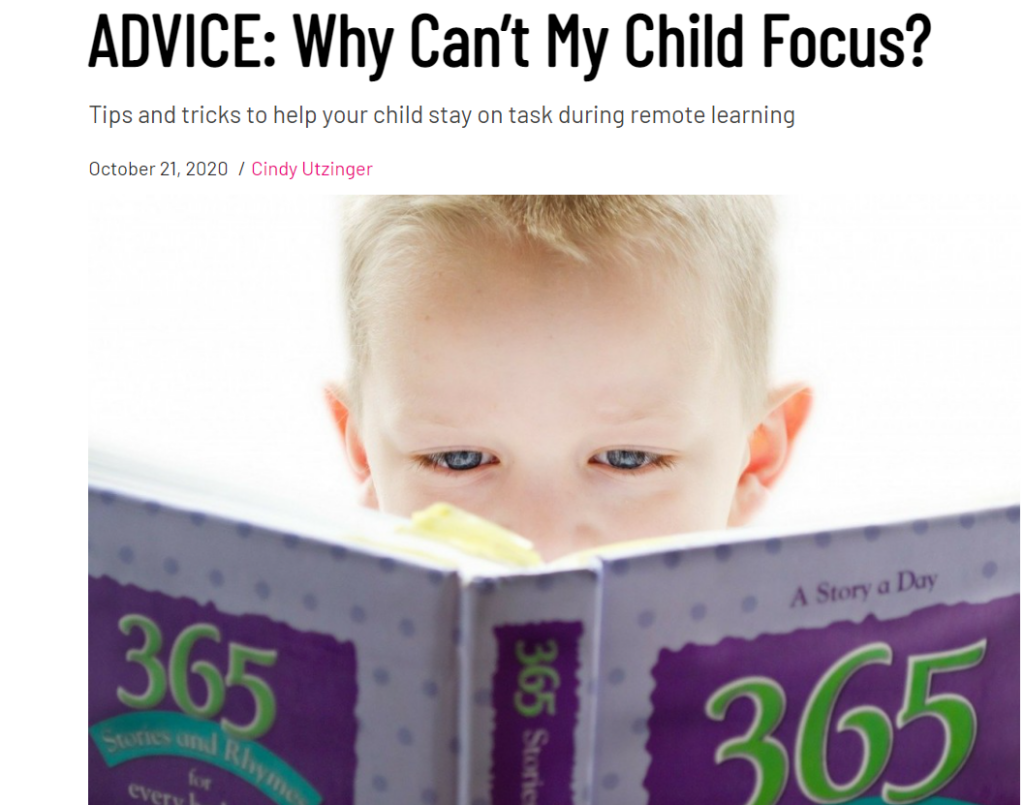Some children can put up a good fight about their clothing. Do any of these clothing battles sound familiar?
- Resisting shoes and/or socks
- Wanting to wear a hoodie sweatshirt or coat all day every day
- Refusing to wear a coat
- Wanting to wear inappropriately tight clothing
- Refusing to wear seasonally appropriate clothing
- Getting dress clothes on is like wrapping barbed wire around them
Ugh! This is a battle in my house and some days it just wears me down!
In my house it goes like this . . . ”You can’t wear a tank top today. It’s 30 degrees outside.” Or, “Jean shorts and a t-shirt are not OK for church.” One time, it went like this…”You have to put shoes on to go outside, it’s snowing!”
As a pediatric Occupational Therapist, I get a lot of questions this time of year from concerned parents worried that something is wrong with their child because they can’t get them to wear pants, a long sleeved shirt, shoes, socks, or put a coat on. I’m here to tell you, you’re not alone in this battle.
Let me start by telling you that just because your child does not want to wear the clothing that we adults deem appropriate for the temperature, does not necessarily mean that they have a problem. You may simply have a child who likes to wear what feels comfortable to them (After all, isn’t that what you would prefer too?) In my case, my thermostat and my childrens’ are polar opposites. I am incredibly cold natured and would wear a coat sitting on the sun and my kids could stand in the snow without shoes and not be cold.
My children are both all about comfort and do not like change. We always have clothing battles when it’s time to trans from summer to winter clothes and vice versa. The way that it goes in my house is that we finally get in to our routine with winter clothes and, voila, it is springtime and now we are battling because they want sweatpants and a sweatshirt and it is burning up outside.
My daughter, on the other hand, has her own sense of style and needs to have a feeling that she is in control, so this is where many clothing battles with her stem from. I have had to get over the fantasy of having a daughter who wants to wear beautiful dresses with matching tights and a big beautiful bow in her hair and realize that I gave birth to the Punky Brewster of the 21st century.
While there can be some simple reasons for the clothing battles, we cannot overlook the fact that sometimes this can be indicative of some other things that a child may be dealing with.
Two reasons for the clothing battles with your child:
Stress
You may be asking yourself right now “Stress. How in the world can my child be stressed?” Seems crazy, right? Oh, to be a kid again! They don’t have a care in the world; or do they?
I hate to say this, but I think our kids are much more stressed out than we realize. A WebMD special news report explains that it can be hard to recognize stress as stress in our kids because they are not able to verbalize it and call it what it is. So, they don’t articulate it but it comes out in other ways such as physical or behavioral.
The demands of school and the pressures that our society places on kids can take a much bigger toll on them than we think. A new school year, new teacher, friends to make, new surroundings to get used to, long school days with high expectations, an over-stimulating day or classroom, after school activities, homework, peer relationships, a mean kid in class, a teacher who doesn’t seem to get them, schoolwork that is challenging, stressed and overworked parents, too little sleep, and an overall lack of free unstructured play time can be a lot for a child to handle.
Who wants to get dressed and get going when they day ahead of them looks long and bleak?Because our children often aren’t able to understand that it is stress or verbalize what they are feeling, they tend to show their stress by acting out in some trivial ways. Often, when I talk to parents about what else is going on that may be causing their child to react to something as simple as putting on shoes or a coat, I find that their poor little systems are pretty stressed and they are choosing to vent that stress and frustration in the morning when it is time to get dressed.
I have worked with a 5 year old girl whose clothing battles seemed to brew while on vacations, the day of a field trip, and on weekends. What we figured out was that being out of her usual routine was stressful to her and a lack of predictability about how her day was going to go was enough to send her over the edge. The way she chose to handle it was a refusal to wear shoes.
I have also seen where a simple change in which parent drives them to school or carpooling with a neighbor can throw them out of routine and create stress. What we realized with one little girl who was really putting up a right was that she was overscheduled with after school activities and the stress over this came out in the mornings when she was having to get geared up for the day ahead of her.
These things seem so silly and simple to us, but can be terribly stressful to a child. In the unpredictable world where our kids don’t get to exert much control over how their day goes, controlling what they wear can be one way for them to maintain some sense of predictability and control.
Sensory issues
It is not uncommon for children to have a hard time regulating the sensory input that they receive on a second by second basis. Children who have a tactile over-sensitivity can be driven crazy by the feeling of their clothes against their skin as they are not able to block out the way it feels on their skin.
For most of us, once our clothes are on, we don’t give the way they feel a second thought. When children are over sensitive to tactile (or touch) input, a touch that seems to you and me to be harmless, can send their nervous system to high alert, or what is called a “fight, flight, or fright” response. You see, there are two components to our tactile system; the discriminatory system which helps us to determine if something is smooth, soft, bumpy, hard, etc. and the protective system which makes us react quickly when we touch a hot stove or feel a bug crawling on us.
What happens when a child has a tactile over-sensitivity is that instead of discriminating between the way their clothing feels against their skin, their protective system takes over making their nervous systems react in the same way yours would if you felt a spider crawling up your leg (scream, swat at it, feel your heart rate increase, start sweating, etc.). To you and me it may feel like soft cotton but to a tactilely over sensitive child, it may feel like barbed wire.
Other kids who have difficulty regulating sensory input will be very resistant, not of the clothing but instead to how loose or how tight it is. In fact, many kids who crave proprioceptive input will really resist loose clothing, instead preferring the deep pressure that tighter clothing gives them.
So, what do you do about this because I know the daily clothing battles can get exhausting? First, you need to determine if there is a true underlying sensory problem. To do this, you can check out the sensory checklist or read more in Why is My Kid Doing That? If you are concerned that there is a sensory processing problem, talk to your child’s doctor and seek out the help of an Occupational Therapist.
Tips to help minimize the clothing battles
Give them extra time in the morning– Oftentimes our children need some time to “come to” in the mornings just like you and I may. They may need to be woken up a few minutes earlier to have some TV time or some time to get their engines running before facing the day ahead of them.
Pick out their clothes the night before – Personally, I find that if my kids and I can agree on what they are going to wear the night before, it makes getting dressed a little easier. Predictability and routine are key for kids and the more we can give them that, the better they do in more cases than not.
Give them choices – A lot of kids like to feel like they have some degree of control. By picking out a few outfits that are acceptable and letting your child pick from those choices, you are maintaining ultimate control but empowering them to feel like they also have some control.
Have a drawer or section in their closet with clothes that are acceptable to wear – I find that when I rearrange my kids’ drawers so they have drawers that they can choose from each day, that helps them to feel in control of what they are wearing. I have a “school drawer” and a “weekend drawer” for my son. Another idea is a “cold day drawer” and a “warm day drawer” to help ensure that they pick from clothes acceptable for the weather.
Be in tune with your child’s stress level – It is important to see if you notice a pattern in their behavior and battles over clothes. Does it only happen on school days and not on weekends? Does it happen on mornings after a long day of school and extracurricular activities so they are more tired? Does it happen on the morning of a day that is going to be especially long for them without much free and unstructured time? Does it only happen when there is going to be something out of their usual routine that day? Does it happen when mom and dad have been especially busy and not able to spend much time with them?
Tips to help kids who are sensitive to the feel of clothing
Give your child lots of opportunities for proprioceptive input:
- Compressive clothing – For children who have a sensitivity to the way clothing feels on them, deep pressure (proprioceptive input) can be very calming. One way to get this deep pressure is through compressive clothing. Athletic clothing with spandex or lycra in them, tight undershirts, leggings, or tank tops are a few ideas. Some kids also seem to do really well with jackets or zip-up sweatshirts that have some stretch to them but are on the fitted side.
- Give your child deep bear hugs prior to getting dressed – This may sound silly, but the deep pressure that a child receives from a deep bear hug (which gives them proprioceptive input) can be neurologically organizing and calming; exactly what a child needs as things are brewing. It may take several of these hugs in one dressing session, but who has ever heard of too many hugs?
- Give your child lots of proprioceptive input prior to getting dressed – As I just mentioned, proprioceptive input can be calming and help organize the brain, making this great to give a child before a stressful situation is about to occur. Examples of activities that provide proprioceptive input are jumping activities, crab walking, wheelbarrowing, massage, “squishing” activities such as throwing some pillows on top of them and gently laying on them, and any other heavy work like carrying their heavy backpack downstairs.
Give your child lots of opportunities for tactile input – Letting your child get their hands dirty, letting them explore their world through touch, and simply rubbing or scratching your child’s back are some great ways to expose your child to tactile input in order to desensitize their little systems to the way things feel. One of my favorite tactile activities is to put textures such as shaving cream, foaming hand soap, flour, sand, sugar, corn meal, pudding, cool whip, etc. on a cookie sheet and let them write or draw in it using their hands and fingers. I also love filling a plastic bin with dry rice, pasta, or beans and hiding various things in it and letting kids dig through the bin to find the hidden objects.
If you have any questions or comments, feel free to ask away or let us know what you think. I also love to hear what works for you and your family.
For more information, check out www.cindyutzinger.com or Why is My Kid Doing That? A Sensory Approach to Understanding Your Child’s Behavior. I would love to connect with you on twitter or facebook



